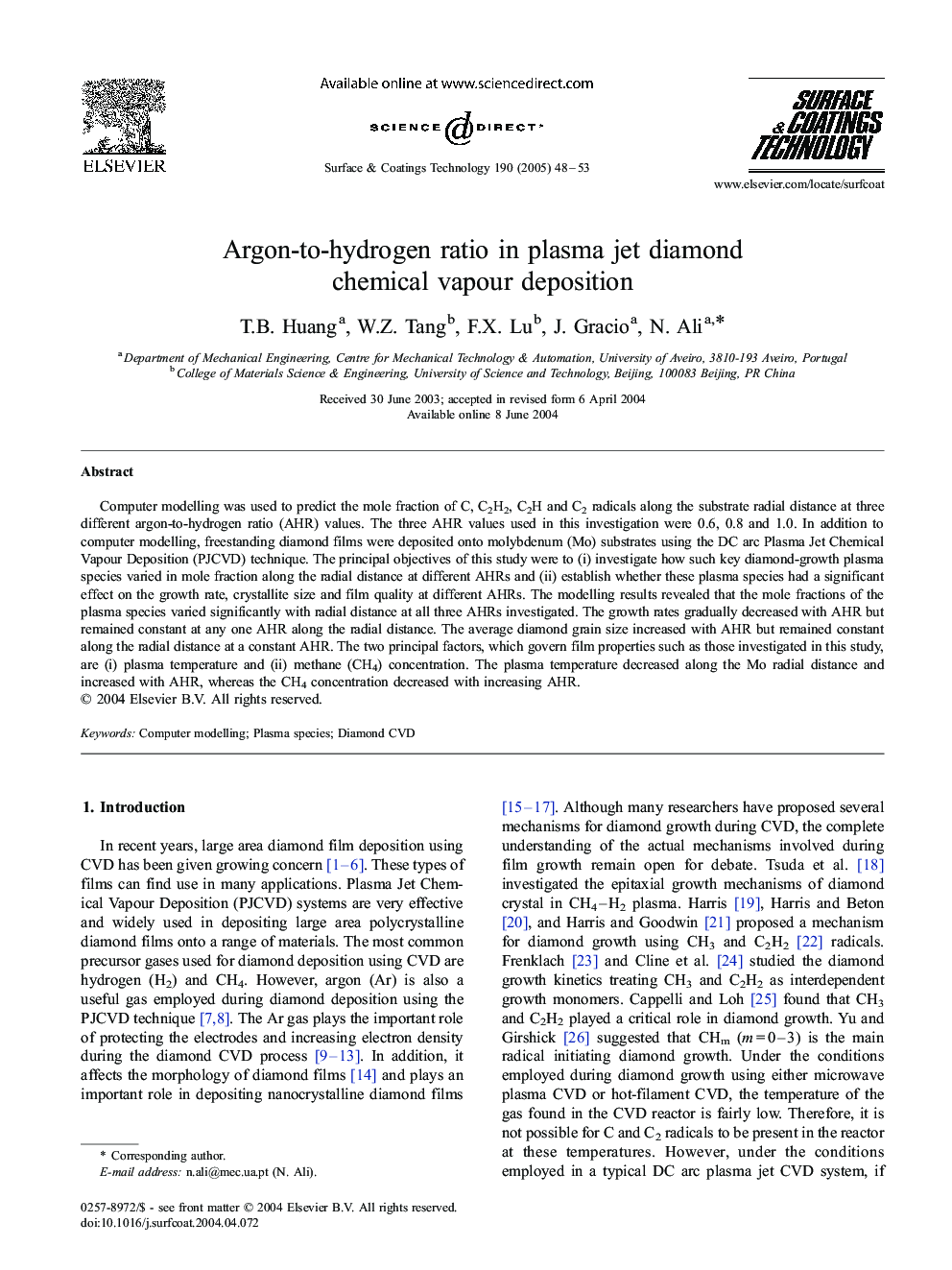| Article ID | Journal | Published Year | Pages | File Type |
|---|---|---|---|---|
| 10668806 | Surface and Coatings Technology | 2005 | 6 Pages |
Abstract
Computer modelling was used to predict the mole fraction of C, C2H2, C2H and C2 radicals along the substrate radial distance at three different argon-to-hydrogen ratio (AHR) values. The three AHR values used in this investigation were 0.6, 0.8 and 1.0. In addition to computer modelling, freestanding diamond films were deposited onto molybdenum (Mo) substrates using the DC arc Plasma Jet Chemical Vapour Deposition (PJCVD) technique. The principal objectives of this study were to (i) investigate how such key diamond-growth plasma species varied in mole fraction along the radial distance at different AHRs and (ii) establish whether these plasma species had a significant effect on the growth rate, crystallite size and film quality at different AHRs. The modelling results revealed that the mole fractions of the plasma species varied significantly with radial distance at all three AHRs investigated. The growth rates gradually decreased with AHR but remained constant at any one AHR along the radial distance. The average diamond grain size increased with AHR but remained constant along the radial distance at a constant AHR. The two principal factors, which govern film properties such as those investigated in this study, are (i) plasma temperature and (ii) methane (CH4) concentration. The plasma temperature decreased along the Mo radial distance and increased with AHR, whereas the CH4 concentration decreased with increasing AHR.
Keywords
Related Topics
Physical Sciences and Engineering
Materials Science
Nanotechnology
Authors
T.B. Huang, W.Z. Tang, F.X. Lu, J. Gracio, N. Ali,
